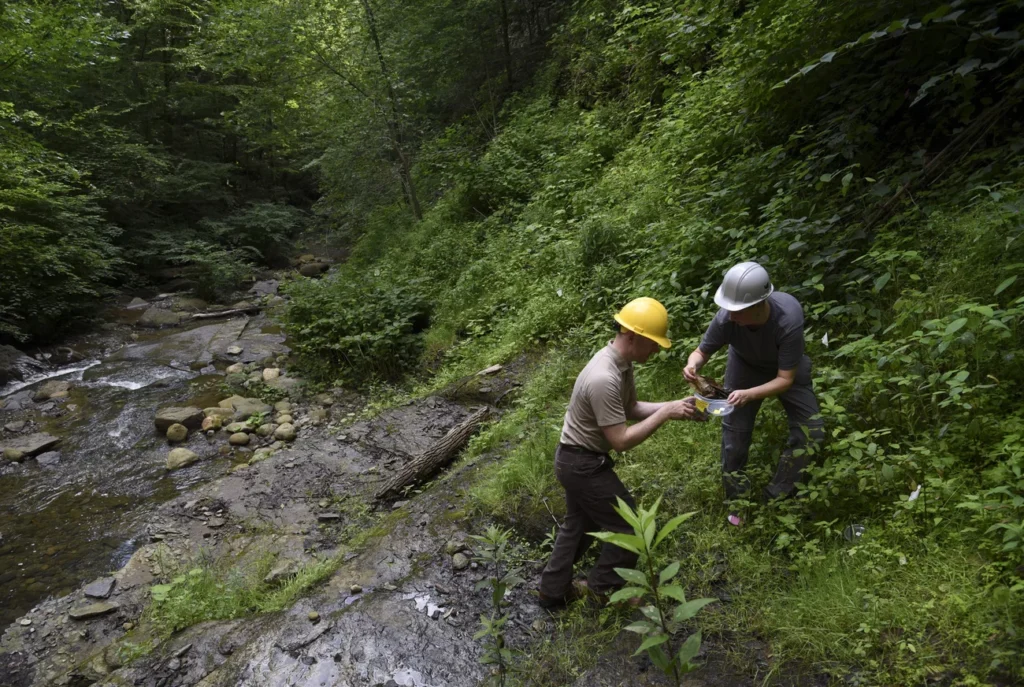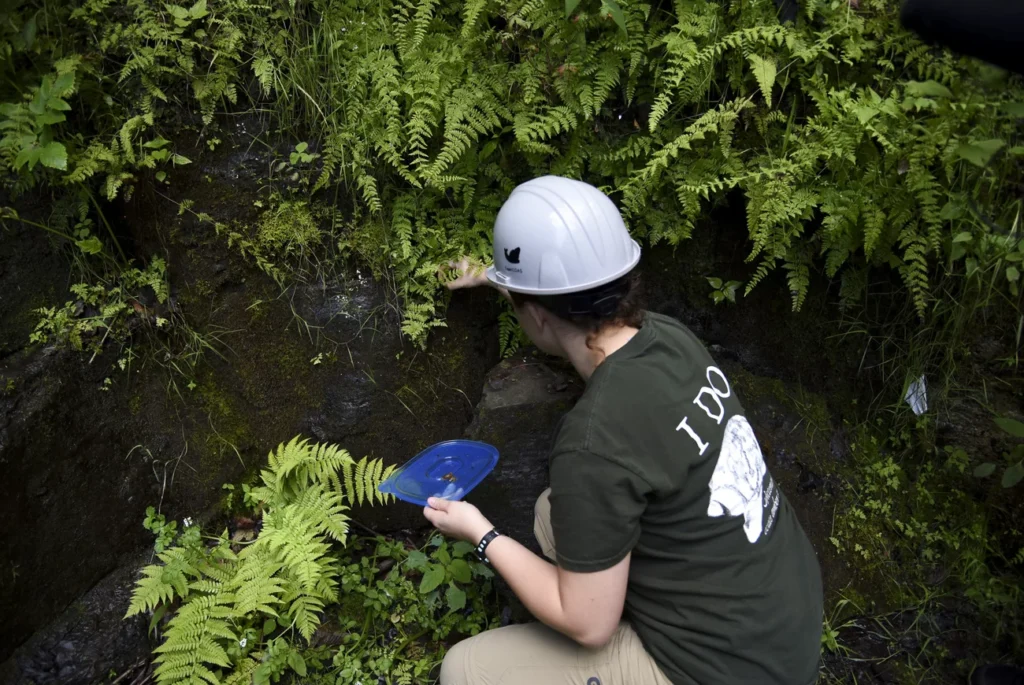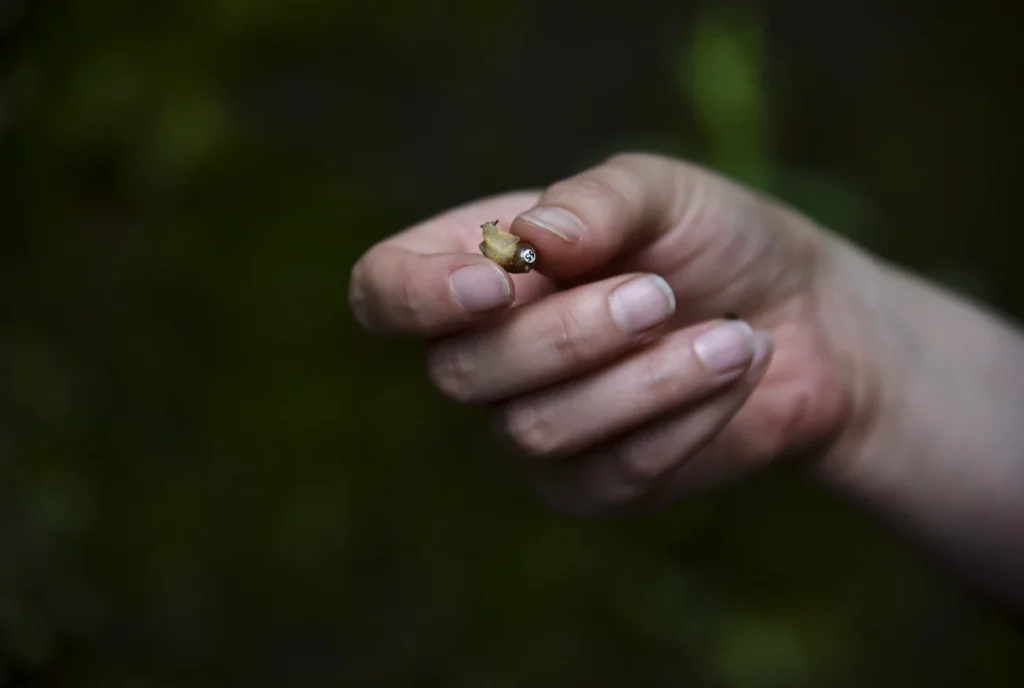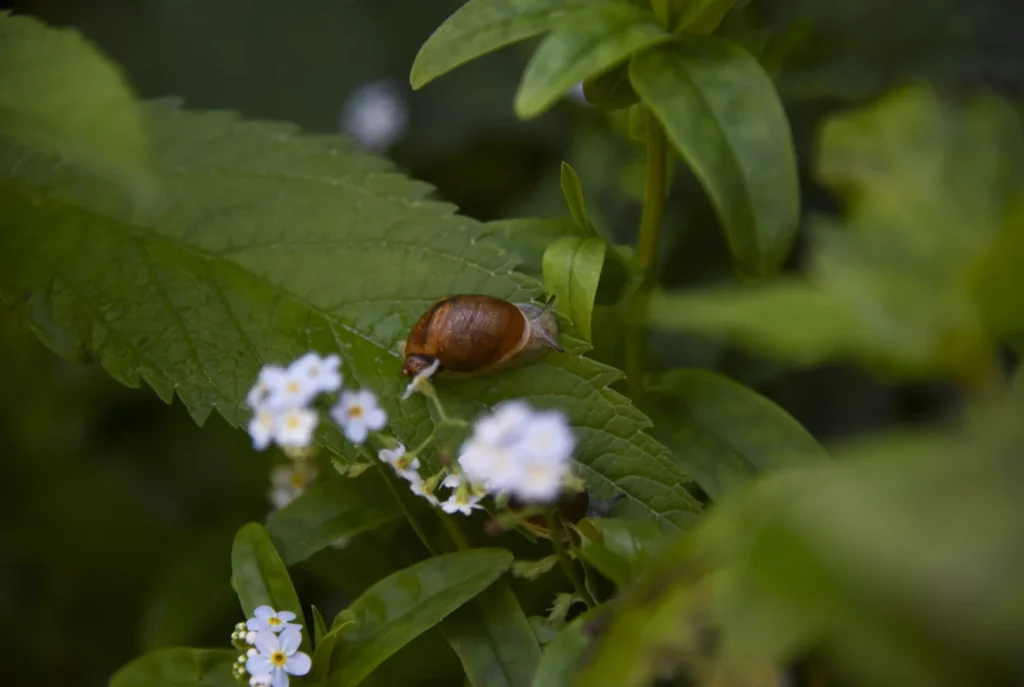Hiking is tricky when you’re carrying a federally threatened species. Ally Whitbread carefully hopped over logs and dodged prickers while toting a cooler full of tiny, rare snails.
“I feel like I’ve got like 500 babies to take care of — just a very crazy mother hen,” she said.
The Chittenango ovate amber snails and eggs inside are facing extinction — only dozens are estimated to remain at one waterfall in Upstate New York — but Whitbread is part of a team transporting a captive-bred population to a new, remote home for a shot at survival. Such a recovery process can take years to decades, and success is uncertain, but scientists are racing to better understand our planet’s biodiversity before species are wiped out.

The squad of snail enthusiasts invested years nurturing a thriving population within the confines of a laboratory at the College of Environmental Science and Forestry, a hidden gem among state schools in Syracuse, N.Y. Embarking on a trek to an elusive waterfall, their goal extends beyond mere observation – it’s a quest to decode the intricate dance of survival for these remarkable snails in their natural realm.
In their tireless efforts to safeguard and scrutinize these elusive creatures, the researchers aim not just to preserve biodiversity but to unlock the cryptic advantages these snails may hold for humanity. Laura Dee, the maven of ecology from the University of Colorado Boulder, sheds light on the concept of “option value,” suggesting that certain plants and animals may harbor unique qualities that could prove invaluable in an uncertain future.
“The notion is that we might want to keep a species in our repertoire, anticipating the enigmatic roles it might play in the unfolding chapters of our shared narrative,” Dee elucidated.

Consider the enigmatic Madagascar rosy periwinkle—an erstwhile rarity whose plant compound has become a cornerstone in leukemia treatments. While not every species may hold the elusive cure for ailments like cancer, Laura Dee underscores the imperative need for deeper exploration. The potential repercussions of losing certain species remain shrouded in mystery, with Dee asserting that the absence of rare species could wield particularly destabilizing impacts due to their singular and pivotal roles in ecological relationships.
“Theoretical frameworks and research suggest that the vanishing act of rare species can unleash profound destabilization, given their potentially matchless and vital roles in various ecological relationships or connections,” she explained.
Beyond immediate applications, the worth of studying species echoes in unexpected realms. Jack Longino, a biology professor at the University of Utah, immerses himself in the cataloging of the world’s ants.
His work goes beyond mere observation, as he believes that deciphering the intricate communication of these insects could offer invaluable insights for programmers navigating the complexities of robotics.

To innovate, to craft new technologies, we are constantly mimicking nature,” remarked Longino.
The Chittenango ovate amber snail may not possess any immediately apparent unique traits that are crucial to humans, making the effort to save them a prolonged endeavor. The half-hour trek to the new habitat marks the most recent stride in a journey spanning over five years—a journey encompassing site surveys, land negotiations, and the ongoing challenge of preserving this delicate species in the laboratory

Cody Gilbertson, the seasoned research support specialist, revealed that the commitment to preserving these creatures transcends the realm of mere science.
“I can’t help but form a deep emotional connection with these little guys—they’re just too adorable,” Gilbertson expressed.
The diminutive critter, no larger than a fingertip, gazes up at its caretakers from the ebony tips of its translucent tentacles.
“With those big eyes peering back at you, it’s impossible not to develop a bit of affection,” Gilbertson added.
Yet, delivering them to their new waterfall haven doesn’t mark the conclusion; rather, it signals the beginning of another chapter. A wait of five more years looms ahead before the team unravels the mystery of whether these snails can thrive in their newfound abode. The team is committed to the journey, embarking on the hike twice a month to meticulously trace the trajectory of their delicate charges.
